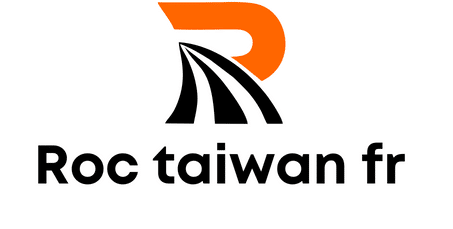How Can Digital Art Therapy Be Used to Support Mental Health in Remote Populations?

In the evolving landscape of mental health support, digital art therapy has emerged as a promising tool. It’s an innovative practice blending the therapeutic power of art with contemporary digital technology, making it accessible to people in remote areas. By harnessing the power of the media arts, therapists can reach out to remote clients, providing them with a therapeutic experience that transcends the traditional confines of a therapy room.
The Intersection of Art and Therapy
Art therapy hinges on the principle that creative expression can foster healing and mental well-being. Traditional art therapy has been around for decades, primarily conducted in face-to-face sessions where therapists guide clients in expressing their emotions through art-making. The advent of digital technology, however, has taken this practice to a whole new level.
A lire également : Can Controlled Indoor Air Quality in Classrooms Improve Cognitive Function in Children?
Digital art therapy allows participants to create art using digital tools and platforms. Through it, therapists can administer therapeutic sessions online, making it accessible for clients residing in remote areas. The whole practice has been redefined by technology, and the use of digital media arts such as painting apps, photo manipulation programs, and digital drawing tools has revolutionized the way therapy is practiced and experienced by clients.
Digital Art Therapy in Practice
For therapists, making the shift to digital platforms requires a degree of familiarity with the technology involved. Clients, on the other hand, may find digital tools easier to use compared to traditional art materials. They can play around with colors, shapes, and effects, without the fear of making irreversible mistakes. The flexibility and versatility of digital art tools can make the therapeutic process more enjoyable and less intimidating for clients.
A voir aussi : What Are the Best Practices for Optimal Mental Health During the Transition to Retirement?
In a typical digital art therapy session, therapists guide their clients in creating digital artwork. They may encourage them to draw or paint what they’re feeling, or ask them to create a digital collage that represents a significant experience. The process of creating the artwork, coupled with the therapist’s guidance, can help clients explore their emotions and express them in ways they might not have been able to verbalize.
The Role of Digital Art Therapy in Mental Health
A study on the impact of digital art therapy on mental health revealed that participants felt more at ease expressing their emotions through digital art. The anonymity that online sessions provide made them feel safer and more comfortable in opening up about their feelings. They also appreciated the flexibility of online sessions, as they could engage in therapy at a time and place that was most convenient for them.
Digital art therapy can be particularly beneficial for individuals dealing with mental health issues like depression, anxiety, and post-traumatic stress disorder. The act of creating art can be a form of release, allowing individuals to externalize their feelings and gain better control over their emotional state. The digital platform also makes it easier for therapists to monitor their clients’ progress, as they have a visual record of their clients’ therapeutic journey.
Bridging the Distance with Digital Art Therapy
The application of digital art therapy in remote populations is a testament to the far-reaching potential of this innovative practice. By leveraging technology, therapists can reach out to clients who might otherwise have limited access to mental health support. Whether it’s a remote community in the mountains, or a busy individual unable to make the time for face-to-face therapy, digital art therapy offers a viable solution.
In the end, the goal of digital art therapy, like any form of therapy, is to improve the mental health of its clients. Through the use of digital tools and online platforms, art therapy is made more accessible, efficient, and engaging, thus expanding its reach and amplifying its impact. As we continue to navigate the digital age, we can expect to see more innovative approaches to mental health support, with digital art therapy leading the way.
Enhancing Accessibility with Digital Art Therapy
As the world continues to become more digitally inclined, the power of digital art therapy is steadily becoming more apparent. This form of therapy has proven to be especially beneficial to remote populations who may have limited access to traditional forms of mental health support. The integration of digital technology has made it possible for art therapists to conduct sessions with clients from any location, opening a new and accessible window to therapeutic support.
The use of digital media in art therapy practice has significantly expanded its reach. With easy-to-use applications and platforms, therapists can now conduct sessions with remote populations, who previously might have had little to no access to such services. These innovative platforms enable therapists to conduct live sessions, provide prompts for art making, and offer immediate feedback to their clients.
Digital art therapy extends the accessibility of therapeutic services, making it possible for people to engage in therapy sessions from the comfort of their own home or any other suitable environment. This greatly reduces the barriers to seeking help, especially for individuals residing in remote areas. Furthermore, the open separate window for online art creation adds a layer of convenience and flexibility, accommodating clients irrespective of their geographical location or schedule.
The effectiveness of digital art therapy rests on its ability to utilize the therapeutic potential of digital art making. The process of creating art online, guided by a professional art therapist, allows individuals to explore and express their emotions in a safe and supportive environment. The anonymity offered by online sessions can also reduce the fear of judgement, encouraging more open and authentic expressions of feelings.
Conclusion: The Future of Digital Art Therapy
Digital art therapy represents a promising practice in the field of mental health support. The innovative blend of art and digital technology offers a versatile and convenient therapeutic tool, especially for remote populations. As we continue to embrace the digital age, it is anticipated that the use of digital media in therapy will continue to grow and evolve.
A key advantage of digital art therapy is its ability to cater to the unique needs and circumstances of each client. By offering a platform that is accessible, flexible, and engaging, this form of therapy can support a wide range of mental health issues, including anxiety, depression, and post-traumatic stress disorder.
The future of digital art therapy looks promising. As more art therapists embrace technology and expand their practices to include digital media, this form of therapy is set to become even more accessible and widespread. It will continue to play a significant role in supporting mental health, particularly in remote populations, marking a new chapter in the field of therapeutic support.
Although digital art therapy cannot completely replace traditional therapy practices, it certainly offers a complementary approach that can enhance the therapeutic experience. As we move forward, it is crucial to continue exploring and refining the practices and techniques involved in digital art therapy. This will ensure that the therapy remains effective, engaging, and beneficial for all clients, regardless of their location or circumstances. The exciting intersection of art and technology in digital art therapy signals a bright and innovative future for mental health support.
